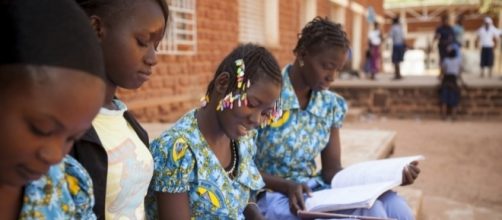The challenges to educating girls effectively in developing countries continue to prove formidable. Closing the gender gap in education is critical to the economic growth in the world and underdeveloped regions. Some decades ago, primary enrollment of girls in poor countries was just 38 percent compared to boys at 62 percent (2005 UNESCO report).The gender gap has narrowed in recent years with some countries are getting closer to the UN target. While the gender gap is narrowing in primary education in some regions of Africa, it is widening in older children as challenges to narrowing the gender gap in education continue to persist.
Education for girls is not a priority
In many developing countries, Education For Girls is not a priority, The very education system is designed and geared toward the teaching of boys which means that there would need to be major structural changes in the education system to value and accommodate girls. In many homes, girls are expected to take care of the home and their siblings and work in the fields or markets support the family financially.
Disparity between regions in the educating of girls
While some developing countries may have attained gender parity, or close to it, other countries continue to lag behind. China, Bangladesh and Indonesia are close to targets while Africa had 100 boys to 82 girls in a 2010 UN report.
Even within regions there are disparities notably in rural areas where it is more dangerous and difficult for children to get to school.
The cost of education
Another challenge to getting girls into schools is the cost of education in some developing countries. The poor cannot afford fees charged for going to school and the result is that choices have to be made. The boys are often the gender that gets the opportunity to attend school while the girls stay at home. Many schools in developing nations require parents to spend money to outfit their children in required uniforms which can be a real challenge to parents. No uniform, no school. In Kenya and Uganda, the practice of charging fees have been discontinued resulting in an influx of new students but school fees and other related costs remain a major deterrent in many developing countries.
Cultural practices
Cultural practices in developing countries keep many girls out of the school system. Many fathers do not see the need or utility for a girl to be educated. In many cultures, a girl's marriage is already arranged at a very young age, so perusing an education seems futile.
Other Considerations
Added to the above named challenges is poverty, violent political conflicts and illnesses like HIV/AIDS. Even though it is the goal of many international aid organizations, including the World Bank and UNESCO, to narrow the gender gap in education, there is the challenge of finding an adequate supply of teachers to meet the need of any increased enrollment.
Closing the gap
Many agencies and organizations are working to end gender disparity in education in countries where they still exist. There is a narrowing of the gap but there is still a lot of work to be done to achieve gender equality in education.

